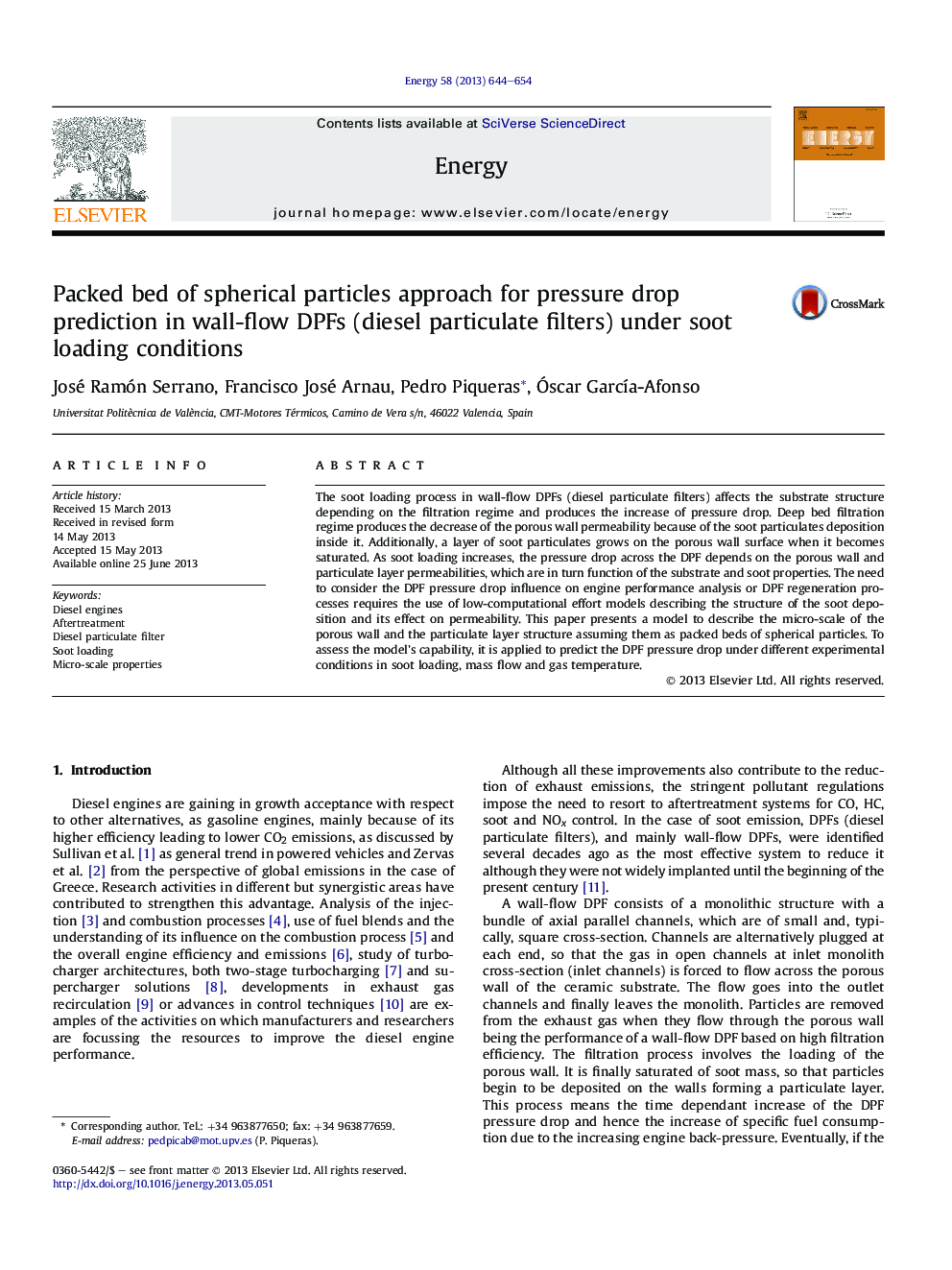| Article ID | Journal | Published Year | Pages | File Type |
|---|---|---|---|---|
| 1732924 | Energy | 2013 | 11 Pages |
•Pressure drop and slip flow effect prediction in loaded wall-flow DPFs.•Porous media described as packed bed of spherical particles.•Shape factor governing the growth of collector diameter in porous substrate.•Shape factor dependence on soot loading, penetration and soot packing density.•Particle size distribution mode diameter controlling particulate layer permeability.
The soot loading process in wall-flow DPFs (diesel particulate filters) affects the substrate structure depending on the filtration regime and produces the increase of pressure drop. Deep bed filtration regime produces the decrease of the porous wall permeability because of the soot particulates deposition inside it. Additionally, a layer of soot particulates grows on the porous wall surface when it becomes saturated. As soot loading increases, the pressure drop across the DPF depends on the porous wall and particulate layer permeabilities, which are in turn function of the substrate and soot properties. The need to consider the DPF pressure drop influence on engine performance analysis or DPF regeneration processes requires the use of low-computational effort models describing the structure of the soot deposition and its effect on permeability. This paper presents a model to describe the micro-scale of the porous wall and the particulate layer structure assuming them as packed beds of spherical particles. To assess the model's capability, it is applied to predict the DPF pressure drop under different experimental conditions in soot loading, mass flow and gas temperature.
